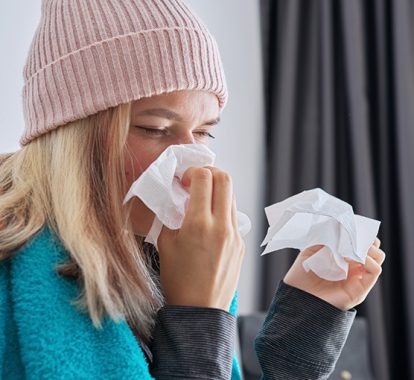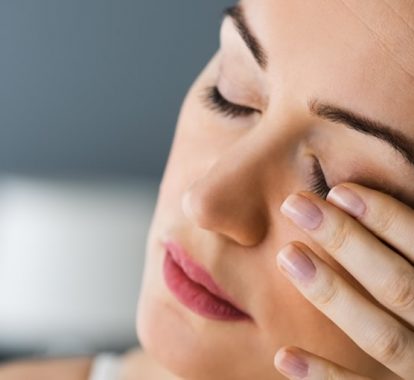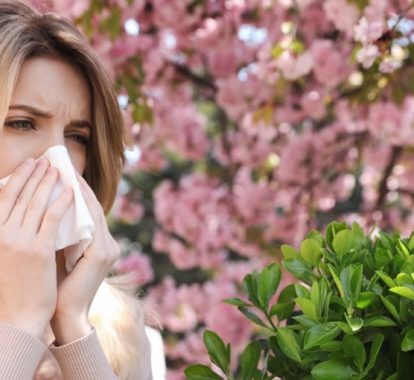Stop Spring Allergies in Their Tracks
March 11, 2022

With spring on the horizon and cedar fever in the rear-view mirror, there may be a temptation to pack away the nasal steroids and get outside to enjoy the warmer weather.
Not so fast.
Unfortunately, waning cedar counts mean spring allergies will soon be popping up across central and south Texas. But there’s good news—knowing when spring allergies will strike and taking proper precautions can keep symptoms to a minimum and you feeling well.
What are common spring allergens in Texas?
When it comes to spring allergies in the lone star state, tree pollen is king. If you live in central Texas, you’ve likely noticed the yellow-green film that accumulates on cars and outdoor furniture once the Live Oak trees bloom. Other sources of spring allergies include ash, pecan, elm, and cottonwood trees. Ash and elm trees start blooming mid-February, followed by oak trees in March, and ending with pecan and cottonwood in May.
Historical fact: Cottonwood translates to Alamo in Spanish. Cottonwood trees once surrounded the Alamo, which was formerly The Mission San Antonio de Valero. When troops were stationed at that location in the early 1800’s they noted the beautiful cottonwood grove and began calling their new home “El Alamo.”
How can I tell the difference between spring allergies and a spring cold?
If you are experiencing itchiness of the eyes, ears, or throat, you’re likely dealing with spring allergies. A sore throat and nasal congestion can be symptoms of both allergies and a cold. One of the easiest ways to determine whether you’re suffering from a cold or allergies is to consider the timing. If you come down with the same symptoms at the same time each spring, odds are you’re dealing with seasonal allergies.
People who suffer from allergies have cells in their body that contain a “lock”. Pollen from trees and grasses can unlock those cells, releasing chemical known as histamines. The histamines attach to receptor sites on other cells within your body and cause itching, sneezing, and congestion.
What can I do to feel better?
There are several things you can do to reduce your reaction to allergens:
- Use antihistamines and decongestants
Antihistamines may be helpful during low pollen counts or when you are experiencing mild symptoms and work by preventing histamines from attaching to cells or knocking them off.
It’s possible that, if pollen counts are very high or you are experiencing severe symptoms, your antihistamine may not provide enough relief. In such cases, decongestants may be used for the initial 2 – 3 days of allergy symptoms.
- Start nasal steroids BEFORE symptoms occur.
If antihistamines have not worked, or are not working this Spring season, it may be time to start a nasal steroid. It’s important to start a nasal steroid before the onset of symptoms.
“Nasal steroids change the configuration on a cell’s ‘lock’,” said Texas MedClinic Chief Operating officer and practicing physician Dr. David Gude. “It prevents the cell from opening and releasing histamines, which prevents the associated itchiness.”
Ideally, you should begin nasal steroids two weeks before the start of spring allergy season.
- Rinse with a neti pot
A neti pot may be used to rinse pollen from nasal passages. You can make your own saline rinse by mixing ¼ teaspoon of salt into 2 cups of sterilized warm water.
- Reduce your exposure to allergens
Avoiding exposure to pollen can go a long way in keeping you well. You can reduce your risk by:
- Spending less time outdoors when pollen counts are high. Your local news should announce daily pollen counts during the weather report.
- Keeping your hands away from your eyes while outside and washing your hands as soon as you come in.
- Showering and washing your hair to remove pollen from your skin and hair.
- Keeping windows closed in your home and car when pollen is high.
- Using high-efficiency filters in your home’s HVAC system. Always confirm your system can accommodate high-efficiency filters before installation.
Regardless of the season, getting control of seasonal allergies can be tricky. Talk to your healthcare provider about what options will work best for you.




